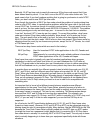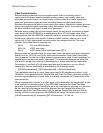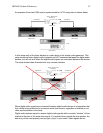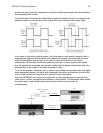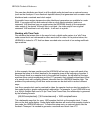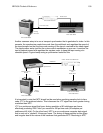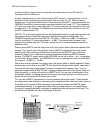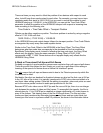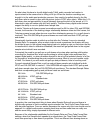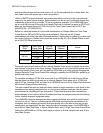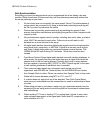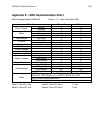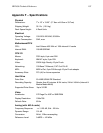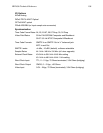HD24/96 Technical Reference 103
So what does this have to do with digital audio? Well, audio recorded on location is
synchronized to the camera that is rolling at 24 fps. When the location recordings are
brought in to the audio post production process, they need to be pulled-down by the film
pull-down ratio to remain in sync with the picture (now in NTSC color video). While this 0.1%
pull-down does not perceptively (to most listeners) change the pitch of the sound, a 0.1%
mismatch in rates will cause sync drift fairly quickly. Therefore many digital audio devices
support the ability to run at a pulled-down sample rate.
A similar Telecine pull-down process is sometimes used for 50 Hz video (PAL and SECAM)
formats, but because of the existing integer relationship between video and film frames, the
Telecine process is most often done as a real-time interleaving process (i.e. no pull down is
involved). Thus PAL/SECAM pull-ups and downs are much less used than NTSC pull-ups
and downs.
Occasionally location audio is pulled up so that after the Telecine it runs at a standard
Sample Rate. For example, when a music video is made, sometimes the director will have
the artists lip-sync to the original song playing back at a pulled-up rate, so that when the film
is transferred to video for television broadcast, the music will get pulled down to the original
sample rate at which it was recorded.
Fortunately the need to use pull-ups or pull-downs only arises when working with location
recordings for theatrical film, when synchronizing to certain digital video machines (that
support digital audio), or when otherwise directed to do so by the technical director of a film
for purposes of standardizing the post production process. Most of you can breathe a sigh
of relief. For those of you who must use pull-ups and pull-downs, here is how they work.
For each standard Sample Rate, a pull-up and pull-down sample rate is defined for both
NTSC and PAL/SECAM. In version 1.1 the HDR24/96 will support both NTSC pull-up and
pull-down sample rates, but not PAL/SECAM pull-ups/downs. The standard Sample Rates
and their corresponding pull-up and pull-down rates are as follows:
50.0 kHz PAL/SECAM pull-up.
48.048 kHz NTSC pull-up
48.0 kHz Standard rate.
47.952 kHz NTSC pull-down.
46.080 kHz PAL/SECAM pull-down.
45.9375 kHz PAL/SECAM pull-up.
44.1444 kHz NTSC pull-up
44.1 kHz Standard rate.
44.056 kHz NTSC pull-down.
42.336 kHz PAL/SECAM pull-down.
In practice, the most important thing to know about Sample Rate pull-ups and downs in
digital audio systems is that to maintain synchronization the Time Code Frame Rate must
also be pulled up/down. From our earlier discussion the reason why this is so should now be
apparent. In a digital audio system, sample clock time and time code time are really one
and the same thing, simply expressed in different units.
Because of the relationship established by the Sample Rate and Time Code Frame Rate
settings, when the Sample clock speeds up or slows down, the Time Code Frame Rate
must also speed up or slow down in proportion. This is no different than slowing down an



